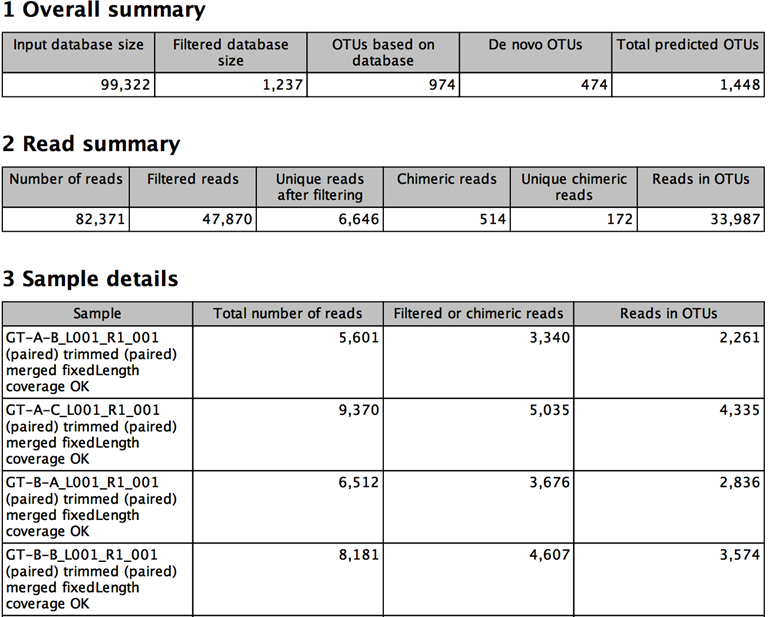OTU clustering outputs
The OTU clustering tool produces several outputs: a sequence list of the OTU centroids, and two abundance tables with the newly created OTUs and chimeras.
In the OTU merge report - generated if the input reads were paired - the following statistics are given for each sequence list input in the tool: a summary of merged and non-merged sequences, an alignment score distribution and a merged pairs length distribution.
The tool also produces a report (figure 5.5).

Figure 5.5:
Example of report produced by the OTU clustering tool.
The content of the report is stated below.
- In the section Overall summary
- Input database size The number of sequences in the input OTU database.
- Filtered database size The number of sequences in the input OTU database having input reads mapped to it.
- OTUs based on database The number of OTUs based on a sequence from the database.
- De novo OTUs The number of OTUs not based on a sequence from the database.
- Total predicted OTUs The total number of OTUs found.
- In the section Read summary
- Number of reads The number of input reads
- Filtered reads The number of reads filtered due to the minimum occurrences parameter. When reads are not at a specified similarity distance with the database, and the option to create new OTUs is not selected, these reads will be filtered as well.
- Unique reads after filtering The number of unique reads after filtering. This is the number of candidates for OTUs before clustering.
- Chimeric reads The number of reads detected as chimeric during clustering.
- Unique chimeric reads The number of unique reads detected as chimeric.
- Reads in OTUs The number of reads that contribute to the output OTUs.
- In the section Sample details
- Sample The name of the sample for which the following details are shown.
- Total number of reads The number of input reads from the given sample.
- Filtered or chimeric reads The number of reads from the given sample that were filtered due to the minimum occurrences parameter or detected as chimeric during clustering.
- Reads in OTUs The number of reads from the given sample that contribute to the output OTUs.
